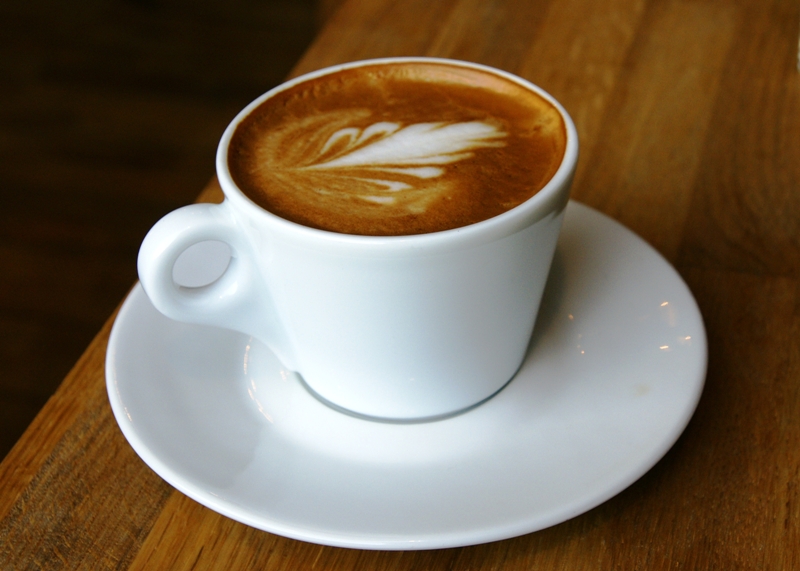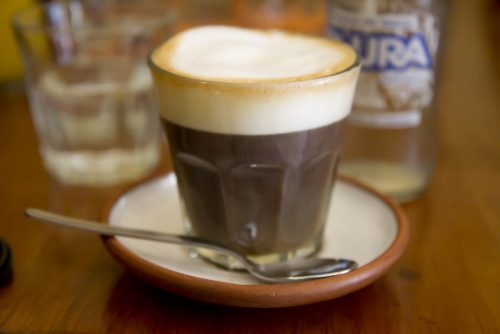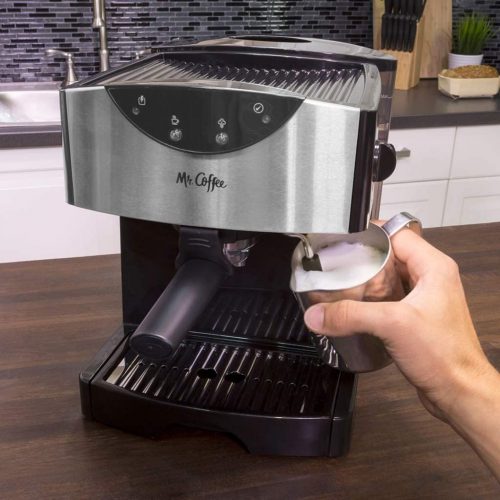What Makes A Cappuccino A Cappuccino + How To Make It At Home!

The cappuccino hardly needs a presentation. Anybody who has ever entered a cafe has seen it on the menu, tasted it, or saw it served to a friend.
It’s a wildly popular coffee drink that has been present in the selection of most cafes for decades.
Yet it is often unclear how it is made. What is it composed of, and what’s the difference between it and similar drinks like a macchiato, a cortado or a, super popular nowadays, latte.
Let’s find out what makes a cappuccino so unique!
A bit of history is needed. The word cappuccino comes from the german “kapuziner”, which is the name of a religious community present in most catholic countries.
The name originated in Austria, around the 18th century. It was a drink made of “coffee with cream and sugar”, named after the color of the local Capuchin monks in Vienna and elsewhere.
It was not codified in any way, and drank mostly locally. A bit later, in nearby Italy, a similar drink was invented but with milk instead of cream.
Around the 1930s photographs of a drink resembling what is today “Viennese coffee”, thus a coffee with whipped cream and sugar, surfaced. The Italians liked to sprinkle cinnamon or cocoa powder on the already delicious beverage.
It was still quite similar to the original drink in Austria.
It was only after the widespread distribution of the first espresso machine that the drink as we call us today “cappuccino” was born.
Espresso, steamed milk and its foam on top. The classic recipe calls for a perfect ratio of coffee, milk and foam: ⅓ each.
This makes for a coffee drink that can be easily scaled up or down according to taste and cup size. At the same time, it’s easy to find divergences from this ratio. Often either increasing the share of coffee or reducing the foam to a thin layer on top, instead of a full layer, as tall as a thumb.
Similar Drinks
To make things worse, a plethora of drinks that aren’t the cappuccino but are very similar to it exist, independently. The confusion of an inexpert coffee drinker ordering in a cafe is understandable.
Ideally, as we said, the cappuccino is made of ⅓ of coffee, ⅓ hot milk and ⅓ milk foam. A close cousin is the macchiato, or “caffè macchiato”.
It is still made with an espresso as the base, and a variable amount of steamed milk in it, usually 1-2 teaspoons. No foam, unless the barista wants to play with the recipe.
It is much smaller in volume than the cappuccino then, and quite stronger. If you’re looking for a strong coffee with just a bit of milk in it to make it sweeter, the macchiato is exactly what you want.
A close variation of the macchiato is the cortado. The term is broadly associated with various coffee or espresso beverages that have been “cut” with milk, to soften its taste.

It is made with a similar volume of milk as in a macchiato, sometimes more. But the milk is less frothy than in the Italian recipe, making it blend more with the coffee than being a separate body in it.
It is extremely well-known in Spain and Latin America, with a huge amount of regional variations of it existing. It is on average larger in volume than a macchiato, with often a larger amount of milk to make up most of the increase.
A flat white is a popular incarnation of the cappuccino that originated in Australia in the mid 1980s. It is very close in taste to a cappuccino, especially the earliest versions of it. It is composed of espresso with hot milk that is not frothed as thick as with a cappuccino.
That allows it to merge better with the coffee but still leave a layer of some “flat foam”, unlike the cortado. It aims to have finer bubbles, with a velvety consistency, compared to a more fluffy and thick cappuccino.
How To Make A Cappuccino
Now that you have a better idea of what is a cappuccino and how it differs from other popular coffee drinks, let’s see how to actually make one at home. You will need a few tools and just 2 ingredients (3 with sugar):
- An espresso machine
- A milk steamer
- A milk pitcher
- A cappuccino cup. A mug will do too
- Around 16-18 grams of ground coffee
- Around 4 ounces of milk (or any milk alternative of your choice)
If you don’t have pre-ground coffee, grind it to an espresso size with your grinder. Then brew it with your espresso machine (you can pull a double shot of espresso if you want a stronger cappuccino).
While the coffee is brewing, you can begin steaming the milk. The cappuccino requires a good amount of foam, so you should hold the tip of your steam wand close to the surface of the milk.

That will allow plenty of air to enter the liquid and create a thick foam.
A staple of a good cappuccino!
Don’t make the whole milk froth. You need half of it steamed and half as foam. Whole milk is best for this task as it is the easiest to froth.
With a milk alternative the task may be harder.
Once the espresso and milk are ready then when can mix. Hold your milk pitcher above the cappuccino cup, pouring in a circular and vertical motion.
The milk will blend with the espresso from the bottom, while the milk froth will be poured in the cup last, floating on top of the cappuccino. You can play with making some beautiful latte art before serving your homemade cappuccino.
Conclusion
The cappuccino is rightfully a famous coffee drink. Balanced, unlike most other coffee drinks, as the amount of coffee is perfectly matched by the hot milk, and complemented by delicious foam on top.
It is extremely customizable with all kinds of syrups, different sweeteners and powder on top. Cinnamon and cocoa are the most used but nothing stops you from using cardamom or vanilla or ginger.
It requires no hard to find ingredients and only an expensive device, the espresso machine, to make it at home. The milk steaming process is somewhat complicated and may require multiple tries to get it right.
That’s part of the fun though. It won’t take you hundreds of hours to make a solid, tasteful cappuccino.
In a short time and with some patience you’ll be creating plenty of flawlessly made cappuccino!